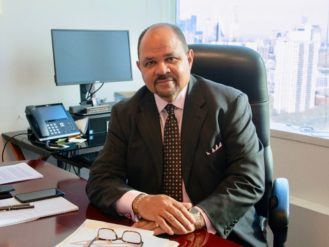Inside the Serious Business of Opening a Comedy Club
How a Brooklyn couple relaunched their Manhattan stand-up venue, Eastville, in their home borough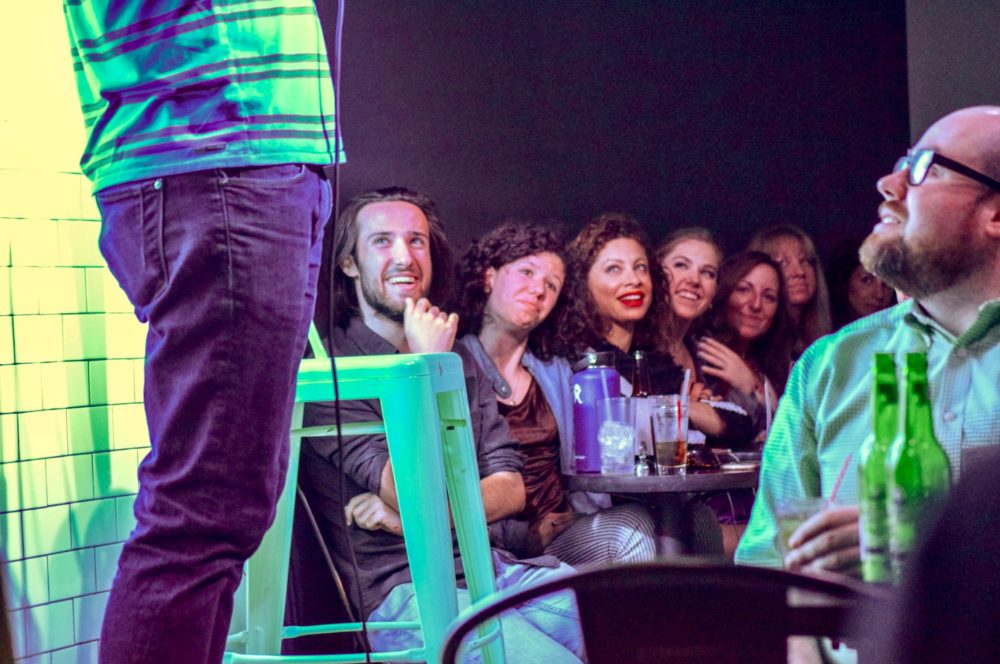
On opening night at Eastville, the 120-seat venue was packed (Photo by Adina Lerner, courtesy of Eastville Comedy Club)
After nearly a decade of running a successful comedy club in the East Village, Marko and Tia Elgart’s business needed a new home. Their lease was expiring and they had been looking for a new spot in the obvious place, Manhattan. Then, one day while they were exploring the area around Barclays Center, the couple considered Brooklyn.
They saw young people and tourists enjoying the new nightlife, and shopping the Apple Store and Whole Foods. “And with the train station, it’s more accessible than almost anywhere in the five boroughs,” Marko told The Bridge in a recent interview. Plus, he and his wife already live in Park Slope, where they’ve called home the past eight years.
Marko and Tia were also well aware at the time that Brooklyn did not have a dedicated comedy club. “Brooklyn has a lot of rooms that do comedy,” Elgart said. “There’s Union Hall, there’s also The Bell House, but those are event spaces,” he said, not the same type of venue as, say, Carolines, the famous comedy club in Times Square.
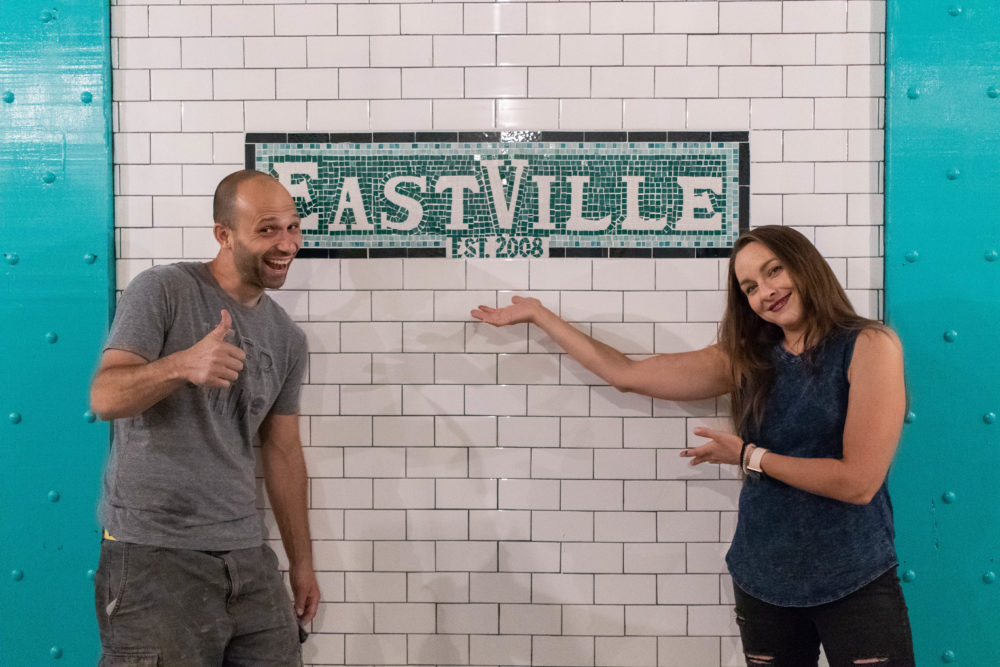
Proprietors Marko and Tia Elgart in their new venue, not far from where they live in Park Slope (Photo by Caleb Caldwell)
Indeed, for all the culture in Brooklyn—from the mainstream events at Barclays Center to the popping parties at House of Yes to the fine art of the Brooklyn Museum—the borough hadn’t had a comedy club of its own … until now. In July, the Elgarts’ new venue, Eastville Comedy Club, opened its doors to paying customers for the first time at 487 Atlantic Ave., right on the edge of the Brooklyn Cultural District.
On opening night, in front of a 120-seat full house, revered performers like Janeane Garofalo (Wet Hot American Summer), Todd Barry (Flight of the Conchords), and Christian Finnegan (Chappelle’s Show) nailed their punch lines and sent drink-swigging comedy fans into convulsions. The new spot is sleeker than the old one, with a freshly plastered subway-tile stage backdrop, high beamed ceilings, and an exposed-brick bar area just past the all-glass façade.
While the move seems like a natural migration now, the road from Manhattan to Brooklyn had its share of potholes. After founding their original club on East 4th Street in 2008—Marko had started producing shows after a short stint as a stand-up performer—they had built up a loyal following, based on performances by rising stars and recognizable stage veterans like Sarah Silverman.
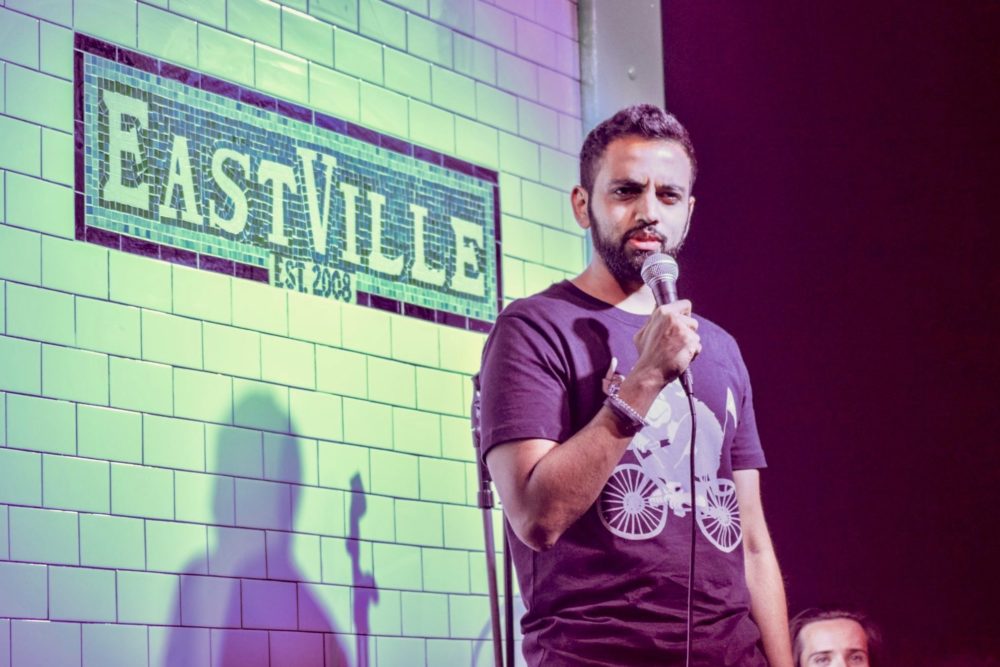
Comic Akaash Singh performing on opening night. Says his website: “He wanted to be a doctor like his uncle and graduated pre-med from Austin College. Naturally, the next step was to move to Los Angeles and become a comedian.” Next stop: New York City (Photo by Adina Lerner, courtesy of Eastville Comedy Club)
But it was time to go. The Elgarts had landlord troubles and felt the need for an upgrade. “The old space was kind of a shithole dive, which was cool ten years ago, but not really anymore,” Marko said. “Our lease was expiring. I started negotiations with my old landlord,” who he describes in colorfully unflattering terms. “He just wanted a lot of money, additional taxes. It was way more than we were willing to pay.”
Finding a new place for a comedy club, however, is a lot harder than finding one for, say, a toy store. The Elgarts scoped out a new location on Avenue A, situated within the boundaries of Community Board 3, the same district as their old club. They crossed their fingers and hoped for the best. Elgart said CB3 had made business at Eastville difficult for him over the years, forbidding the front of the club to operate as a full-time bar, which meant the staff could sell drinks only to show-goers.
When the Elgarts proposed their move to the board, Marko said they approved it, but with impossibly burdensome stipulations. “They were like, ‘You can only be open til 12 a.m. on weekends, you can’t have any lines outside,’ just completely shitting all over the business we had for 10 years.”
In an email to The Bridge, Susan Stetzer, District Manager of CB3, wrote that the Elgarts wished to move the club “to a very saturated area,” when it comes to the number of establishments owning late-night liquor licenses. She also wrote that that part of the neighborhood was home to “a great deal of noise complaints reported to the community board,” sparked by commotion on the sidewalk. “No wait lines is a consistent stipulation for businesses in the area and the Comedy Club was not being singled out.”
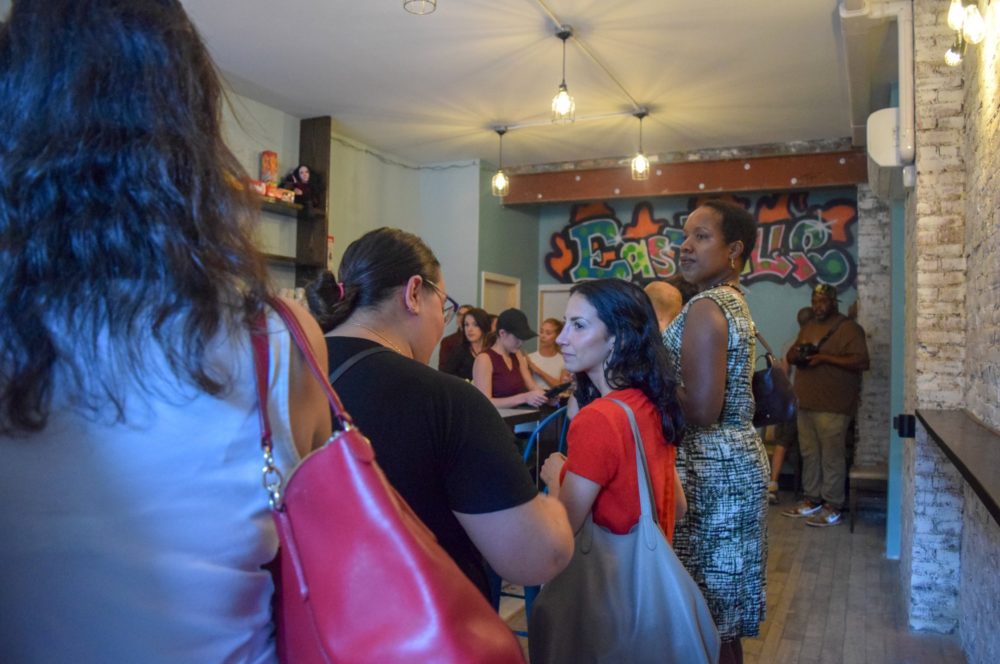
The comedy club has a bar in the front of the house, separate from the main room (Photo by Adina Lerner, courtesy of Eastville Comedy Club)
Once the Elgarts gave up on Manhattan, they found a place in Brooklyn with a lease that Marko said is much more agreeable than the one he was nearly forced into. After six weeks of renovation at the new space, the club reopened, retaining its original name because, Elgart said, most people don’t make the connection between the moniker and the original East Village location. Nor did he want to throw away a decade of branding efforts.
Summer was a slow season to launch a new club, but Elgart expects Eastville to recoup the cost of the move within a couple years. Tickets for the shows are priced modestly, with a $20 cover charge for weekend shows, a buck cheaper than Eastville was charging in Manhattan. Weeknight shows are $12 per ticket, or roughly 20% less than the prices for many such shows across the river.
The club’s cash cow, of course, is booze. “Ticket prices are a low-revenue source; I would guess 10% or 20%, tops,” Elgart said. There’s a two-drink minimum during shows but Elgart says customers will buy more than that if the waiters work quickly enough. “We staff a little more, and people will drink more than two, you’ve just got to get to them.” Drink prices are a bit higher in the main room than you’d find in your corner watering hole, or even the bar in the front of the club before performances begin.
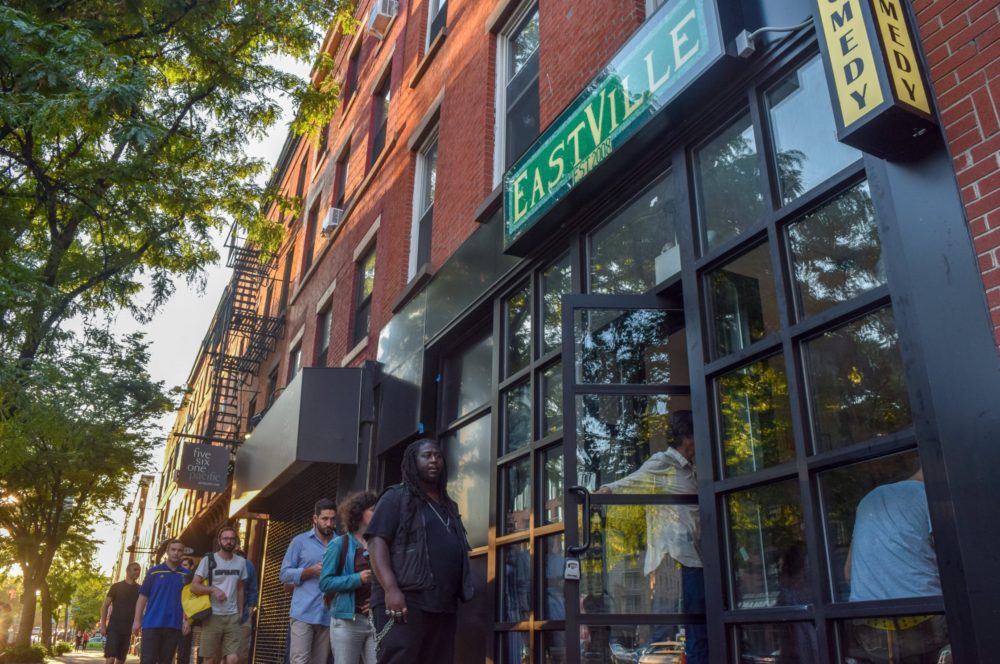
The Atlantic Avenue club is near other cultural venues, including Brooklyn Academy of Music and Barclays Center (Photo by Adina Lerner, courtesy of Eastville Comedy Club)
Elgart said he compensates the comics competitively, if not a little better than some other clubs, depending on the show’s date, time, and roster. In general, the pay for stand-up performers ranges from notoriously little, sometimes $20 to $50 for comics just starting out, to hundreds or thousands of dollars for headliners.
In Elgart’s case, he said he pays a total of “thousands of dollars a week” to the comedians. “I like being a good boss to everybody. I want to make everybody as happy as I can, but I also have to make smart business decisions because these comics aren’t paying the huge rent that I’m paying, they’re not paying the huge insurance I’m paying.”
The talent has certainly found its way to the new Eastville stage, including Anthony DeVito, a writer on The Break with Michelle Wolf; Mark Normand, who’s starred in two Comedy Central specials; and born-and-bred Brooklynite Wil Sylvince, who’s toured the country with the likes of Damon Wayans and Katt Williams.
“When I first entered the new Brooklyn location of Eastville Comedy Club I was surprised to see how fresh, clean, and magnificent it looked,” Sylvince wrote in an email to The Bridge. “The actual room where the comedy show was happening was excellent. As I walked out after my set I thought—this is just what Brooklyn needed.”
Spats with community boards, landlords, and perhaps the occasional comedian aside, Marko Elgart says he and his wife—who have two young children—enjoy running Eastville. “I love it,” he said. “I’m very fortunate that I’m not stuck in a cubicle from 9 to 5; that’s not something I want to do; I’m my own boss. It’s a lot of hard work, but we’re lucky to be in the business.”







